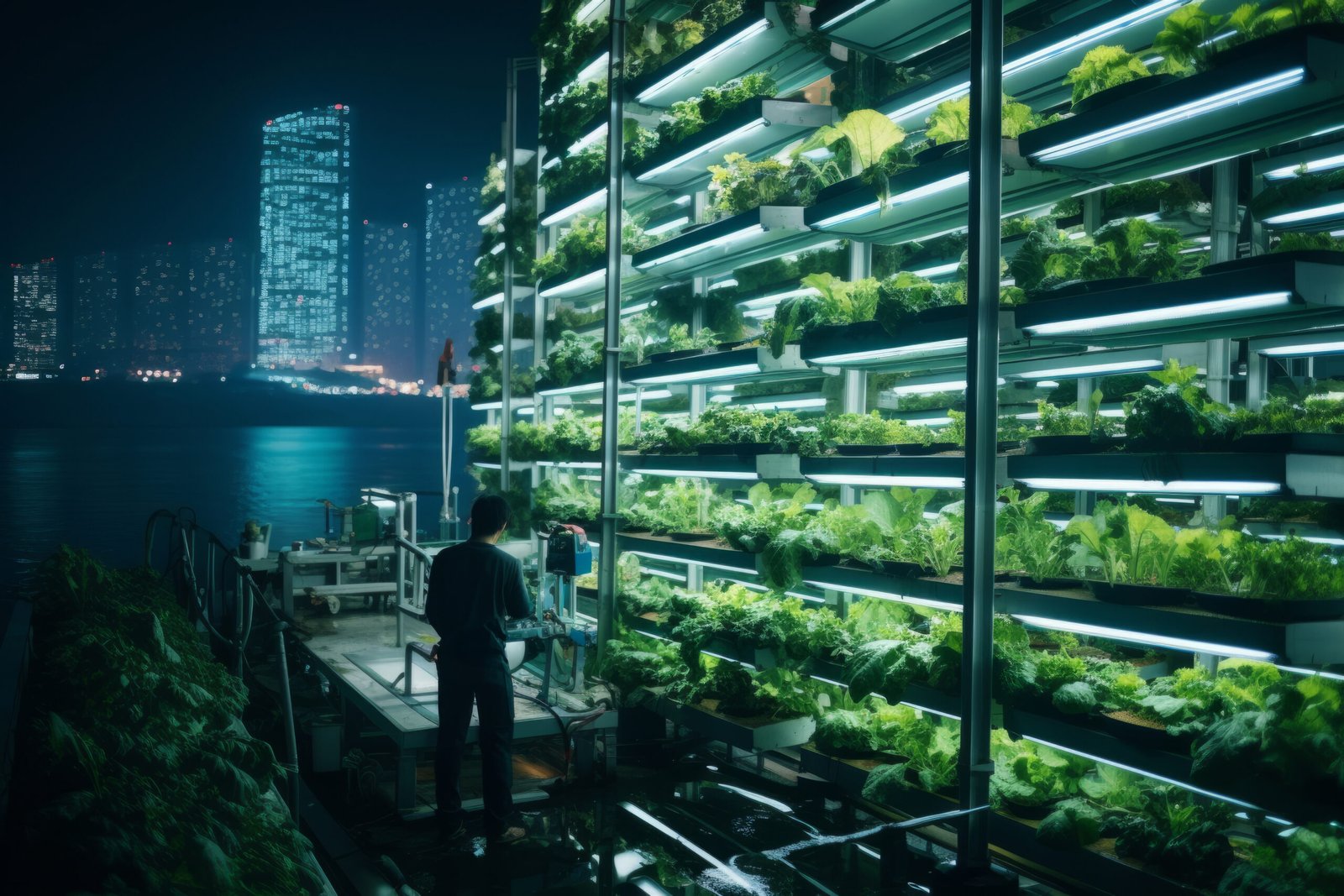Have you ever wondered if it would be possible to grow food in the concrete jungle outside your window? As it happens, we can—and it’s known as vertical farming. Cities’ perspectives on food are being altered by this innovative concept, which may even rescue the globe (no pressure, right?). Let’s examine why vertical farming is so popular, how it operates, and why cities like yours are ideal for it.
What Exactly Is Vertical Farming?
Alright, let’s start with the definition of vertical farming. Imagine growing crops in tiers, similar to library shelves, rather than on a level field. In order to assist plants develop without sunlight, these farms are typically located indoors, within buildings or warehouses, and they make use of specialized lighting and equipment. It’s like to giving vegetables their own tiny residential complex!
Vertical farming is a game-changer, not just a cool concept. It’s becoming more difficult to find room to grow food as more people move into cities every day. This is when vertical farming comes in handy. In addition, it consumes significantly less land and water than conventional farming. Quite amazing, isn’t it?

Why Vertical Farming Excels for Urban Areas
1. Space-Saving Superpowers:
Space is valuable in urban areas. Buildings cannot simply be demolished to provide space for farms. This issue is resolved by vertical farming, which grows food UP rather than OUT. Imagine it as a plant skyscraper, with piled levels of verdant bliss occupying almost no ground space.
2. Fresh Food, Fast:
It’s possible to grow fresh fruits and vegetables in your neighborhood with vertical farming. According to one study, vertical farms can produce crops all year round, regardless of weather conditions, so you can wave goodbye to sad tomatoes and hello to crisp lettuce all year round. Have you ever noticed how grocery store produce sometimes tastes…meh? That’s because it often travels long distances before reaching your plate.
3. Eco-Friendly Vibes:
Conventional farming requires a lot of chemicals and water, which is bad for the environment. Conversely, vertical farming is incredibly environmentally friendly. There is no need for pesticides because everything takes place indoors, and some systems recycle up to 95% of the water they use. Your salad will appreciate it.
The Science Behind Vertical Farming
Let’s now take a moment to nerd out. In reality, how does vertical farming operate? Don’t worry, I’ll keep things easy.
The majority of vertical farms employ hydroponics or aeroponics. With hydroponics, plants are grown in nutrient-rich water rather than soil. By spraying the roots with nutrients, aeroponics goes one step further. Both approaches are very efficient and let plants develop faster than in plain dirt.
Another important factor is lighting. These farms use LED lights to simulate sunlight because they are indoors. These lights are energy-efficient and can be adjusted to give plants exactly what they need. It’s like giving each plant its own personal spotlight. Cue the applause!
Challenges in Vertical Farming
1. Costs Can Be High
It costs money to set up a vertical farm. You require climate control systems, lights, and expensive equipment. This makes it more difficult for small farmers to get started for the time being. Don’t worry, though; engineers and scientists are working hard to reduce expenses.
2. Not All Crops Work
For leafy greens, herbs, and strawberries, vertical farming is fantastic; but, it is not a viable option for growing wheat or corn. Those crops require various circumstances and a lot of space. Therefore, even if vertical farming is fantastic, traditional farming won’t be replaced by it anytime soon.
3. Energy Use
Vertical farms consume a lot of electricity to run the climate systems and lights, despite the fact that they conserve water. To make them more environmentally friendly, researchers are investigating renewable energy sources like solar panels.
Why Should You Care About Vertical Farming?
The emotional aspect comes next: picture yourself strolling through your metropolis with verdant walls of vegetation all around you. Imagine being aware that the lettuce on your sandwich was grown on a nearby farm. By reintroducing nature into urban areas, vertical farming improves the quality of life in cities.
Additionally, we need more intelligent ways to feed everyone as the world’s population continues to grow. Vertical farming could help solve hunger problems in cities around the world. Doesn’t that feel good?
Wrapping It Up
The future of urban agriculture lies in vertical farming, which is more than simply a trendy buzzword. It brings fresh produce closer to home and saves space and resources by growing food upward rather than outward. Although there are obstacles to overcome, the potential is immense.
So, the next time you’re eating a salad or drinking a smoothie, consider the origin of that meal. It might come from a vertical farm in your own city one day. And who knows, perhaps YOU will initiate it! All set to embrace the green revolution? Tell your friends about the benefits of vertical farming by sharing this blog. One layer at a time, together, we can cultivate a better future!









I want more information on your services. Especially Articles on urban vertical farming.
Sure! Hit us up on info@scienceoftheuniverse.net